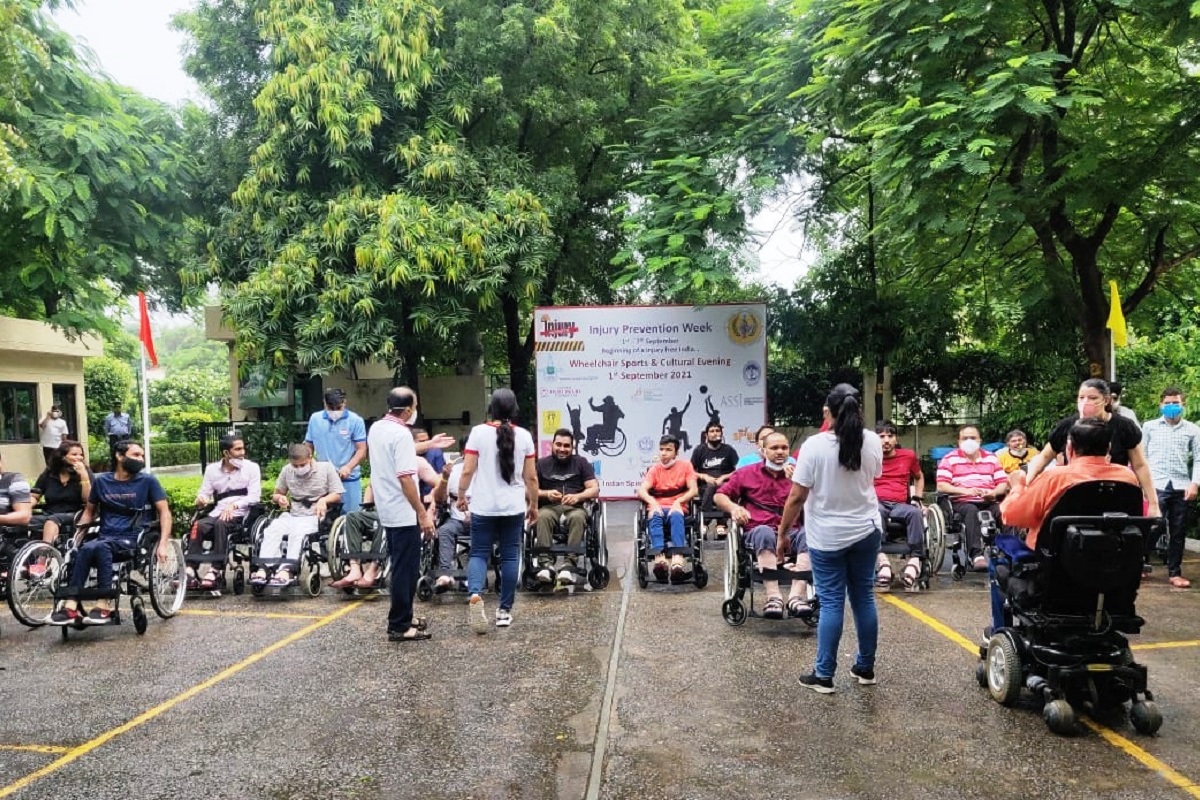DGHS Atul Goel emphasis on prevention of diseases
The DGHS made the statement at a meeting chaired by him with major health professional bodies of India through hybrid mode.
The program was launched virtually in Delhi, Chennai, Mumbai, Kolkata, Cuttack, Pune, Lucknow, Hyderabad, Patna, and Bhopal followed by wheelchair sports and cultural evening in Delhi.

According to the experts the goal of the seven-day-long program is to improve the health of the citizens by preventing injury, illnesses, and death and hence, improving the quality of life.
Spine care experts join hands, under the aegis of DGHS launched the Maiden National Injury Prevention Week Pan India. Quoting a survey under which an estimated one million people die and 20 million are hospitalized every year in India due to injuries caused by road accidents and falls, among others.
According to the experts the goal of the seven-day-long program is to improve the health of the citizens by preventing injury, illnesses, and death and hence, improving the quality of life.
Advertisement
The first-of-its-kind initiative brings together Indian Association of Physical Medicine and Rehabilitation (IAPMR), Indian Head Injury Foundation (IHIF), Chandigarh Spinal Rehab, The Association of People with Disability, The Spinal Foundation, KARA Medical Foundation, Spine Wellness and Care Foundation, Be Brave and Nina Foundation as well.
Advertisement
The program was launched virtually in Delhi, Chennai, Mumbai, Kolkata, Cuttack, Pune, Lucknow, Hyderabad, Patna, and Bhopal followed by wheelchair sports and cultural evening in Delhi.
“Road crashes and falls are among the top reasons of injury in India. In fact, India accounts for about 10 per cent of road crash fatalities worldwide, comprising a large number of youths between 18 and 35 years. In 2017, 26,896 adults in India died due to non-usage of seat-belts. Head injury is the leading cause of death for children, teens and young adults. Injury prevention is important not only to maintain the quality of life but also to save the lifelong economic burden – in the US, paraplegics (complete paralysis of the lower half of the body) incur a lifetime economic burden of USD 2 million while tetraplegics (persons paralysed in both arms and both legs) incur a burden of USD 4 million. Prevention Programs are extremely cost-effective; investing USD 10 per person in prevention programs can help us save nearly USD 3 billion in health care costs in 2 years,” says Dr H S Chhabra, President Spinal Cord Society, Immediate Past President ISCoS & ASSI, Medical Director Cum Chief of Spine Services, Indian Spinal Injuries Centre, New Delhi.
Under the National Injury Prevention Week, outdoor activities will be held across India, with prime focus on activities in schools and colleges for sensitizing the younger generation towards injury prevention.
Advertisement